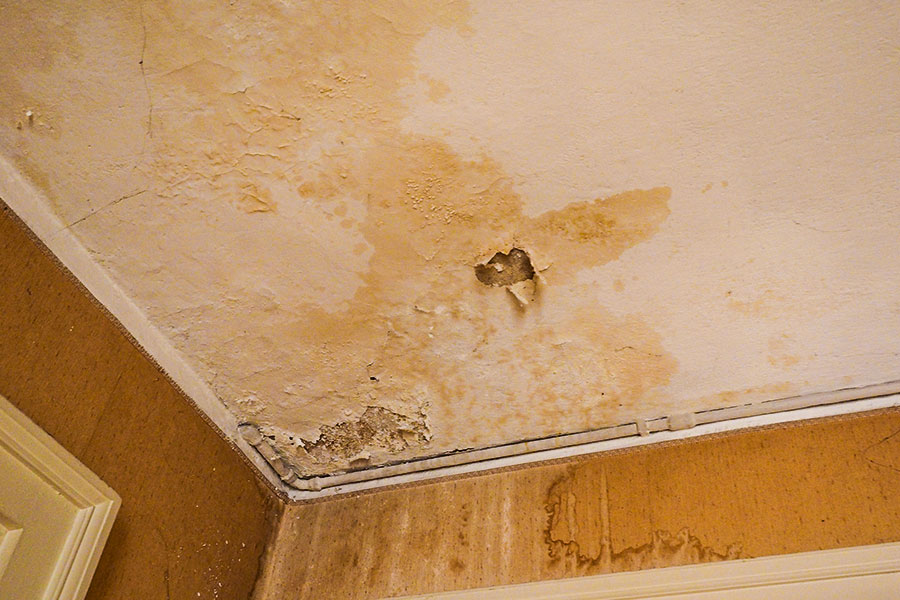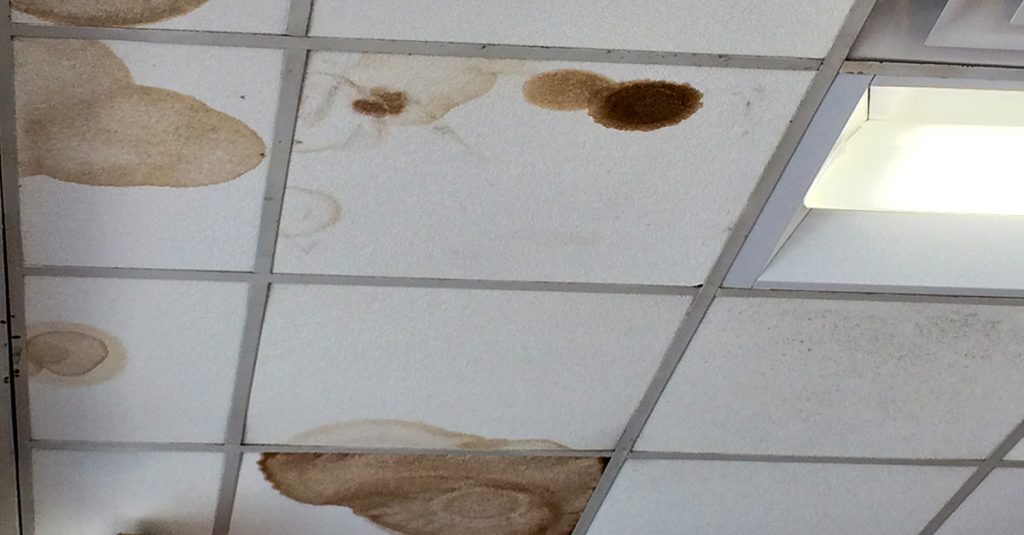A condensation leak in ceiling can be an alarming issue for homeowners. The appearance of water spots, drips, or mold growth on the ceiling often signals an underlying problem, and ignoring it could lead to more severe damage to your home. Condensation leaks are typically the result of excess moisture accumulating in the air and finding its way into your ceiling or attic. This type of issue is most common in areas with fluctuating temperatures and high humidity levels.

In this comprehensive guide, we will explore the causes of condensation leaks in ceilings, the potential effects on your home, how to identify them, and most importantly, the solutions you can implement to fix the problem. Whether you’re a homeowner experiencing a leak or someone looking to learn more about this issue, understanding the causes and solutions of condensation leak in ceiling is crucial to maintaining a safe, dry, and healthy home.
What is a Condensation Leak in Ceiling?
A condensation leak in ceiling occurs when warm, moist air in your home meets cold surfaces, such as the ceiling or the roof of your attic. The moisture in the air condenses into water droplets, which accumulate and may seep through insulation and drywall, causing leaks and water stains on your ceiling. Over time, this moisture can lead to mold growth, wood rot, and even structural damage.
Unlike water leaks caused by rain or pipe bursts, condensation leaks typically happen gradually and can be difficult to detect at first. They are more common in certain areas of the house, such as kitchens, bathrooms, and laundry rooms, where there’s frequent moisture buildup due to cooking, showering, or washing clothes.
Causes of Condensation Leaks in Ceiling
Understanding the root causes of condensation leaks is essential for finding the right solution. Below are the most common causes of condensation leaks in ceilings:
1. Excess Humidity in the Home
Humidity plays a significant role in condensation. When warm, moist air from activities such as cooking, showering, or drying clothes rises and comes into contact with a cold ceiling or attic, the moisture in the air condenses. This is especially problematic in areas with poor ventilation, where the humidity cannot escape and accumulates in the ceiling space.
Read too: Kitchen Lighting For A Vaulted Ceiling: Illuminating Your Space with Style and Functionality
2. Improper Ventilation
Lack of ventilation in your attic or home can significantly contribute to condensation problems. Without proper ventilation, warm, moist air becomes trapped in areas such as the attic, creating an environment where condensation is more likely to occur. The lack of airflow prevents moisture from escaping, leading to increased humidity and condensation buildup on cold surfaces.
3. Poor Insulation
Inadequate or improper insulation in the attic or ceiling can allow warm air from the living spaces to rise and meet cold surfaces. This temperature difference can cause condensation to form, especially if the insulation is damaged or insufficient. Insulation helps regulate temperature and keeps warm air inside, preventing condensation from forming on the ceiling.
4. Roof Leaks
In some cases, roof leaks can contribute to ceiling damage and the appearance of water stains. If rainwater enters the attic or ceiling through a damaged roof or flashing, it can mix with the moisture from condensation, leading to visible leaks. While roof leaks and condensation leaks are different issues, they can both lead to similar damage to the ceiling.
5. Improper Installation of Ventilation Systems
A poorly installed ventilation system can create uneven airflow in your attic or roof space. If the vents are placed incorrectly or there is inadequate venting, moist air can become trapped, leading to condensation. Inadequate venting can also cause an increase in temperature differences between the inside and outside of the home, which promotes condensation buildup.
Symptoms of a Condensation Leak in Ceiling
Detecting a condensation leak early can help prevent long-term damage. Here are some common signs that may indicate you have a condensation leak in your ceiling:
- Water Stains: Brown or yellowish water stains on the ceiling or walls are one of the most obvious signs of a condensation leak. These stains often appear as rings or patches, indicating water accumulation.
- Sagging Ceiling: If the ceiling feels soft or spongy to the touch, it may be an indication that moisture has accumulated behind the drywall or plaster, weakening the structure.
- Mold or Mildew Growth: Moisture from condensation can create an ideal environment for mold and mildew to grow. If you notice a musty smell or visible mold on your ceiling or walls, it could be a sign of a condensation problem.
- Increased Humidity Levels: If you notice that the air in your home feels damp or heavy, especially in certain rooms like the kitchen or bathroom, it may be due to high humidity levels that contribute to condensation issues.
- Puddles of Water: If water begins to pool on the floor beneath the ceiling, it may indicate a more severe condensation problem or a combination of condensation and roof leaks.
Effects of a Condensation Leak in Ceiling
If left unchecked, a condensation leak in ceiling can lead to significant damage to your home. Here are some potential effects:
1. Mold and Mildew Growth
The presence of moisture on your ceiling and inside your walls can lead to mold and mildew growth. Mold not only damages the materials in your home but can also pose health risks. Prolonged exposure to mold can cause respiratory issues, allergies, and other health problems.
2. Structural Damage
Moisture can weaken structural components, such as wooden beams, rafters, and drywall. Over time, the accumulated moisture can cause wood to rot and drywall to deteriorate. This can result in costly repairs to the ceiling, walls, or even the entire roof structure.
3. Increased Energy Costs
Condensation can create an inefficient temperature balance in your home. As moisture builds up in the attic or ceiling, insulation may become less effective, and the overall energy efficiency of your home can decrease. This can result in higher heating and cooling costs.
4. Aesthetic Damage
Water stains, mold, and sagging ceilings can affect the overall aesthetic of your home. If left untreated, a condensation leak can ruin the appearance of your ceiling and reduce the value of your home.
How to Fix a Condensation Leak in Ceiling
Once you’ve identified a condensation leak, it’s crucial to take immediate action to prevent further damage. Below are the steps to address a condensation leak in ceiling:
1. Address the Source of Moisture
The first step in fixing a condensation leak is to control the moisture levels in your home. This could involve:
- Using a dehumidifier to reduce humidity in the affected area.
- Ensuring proper ventilation in high-moisture areas like kitchens, bathrooms, and laundry rooms.
- Installing an exhaust fan to vent moist air outside the house.
2. Repair Roof or Attic Leaks
If the condensation is caused by a roof leak, it’s important to have the roof professionally inspected and repaired. Ensure that any damage to the roof, flashing, or attic is addressed to prevent further moisture intrusion.
3. Improve Ventilation and Insulation
Ensure that your attic is well-ventilated to allow warm air to escape and reduce moisture buildup. Adding or replacing insulation can also help regulate temperature and prevent condensation from forming on cold surfaces.
4. Fix the Ceiling and Drywall
Once the source of the condensation is addressed, you may need to repair the ceiling and drywall. If the drywall is sagging or damaged, you may need to replace it. Be sure to allow the area to dry completely before making repairs to prevent mold growth.
5. Prevent Future Condensation
After repairing the leak, take steps to prevent future condensation issues. This may include installing vapor barriers, improving attic insulation, or ensuring that ventilation systems are properly installed and maintained.
Conclusion
A condensation leak in ceiling can be a serious issue for homeowners, but with the right knowledge and solutions, it’s entirely preventable and fixable. By addressing the root causes of condensation—such as excess humidity, poor ventilation, and inadequate insulation—you can protect your home from long-term damage, mold growth, and costly repairs.
Regular maintenance, proper ventilation, and timely repairs are essential to keeping your ceiling and home dry and safe. If you notice signs of condensation, it’s best to act quickly to avoid more severe damage and maintain the structural integrity of your home.

